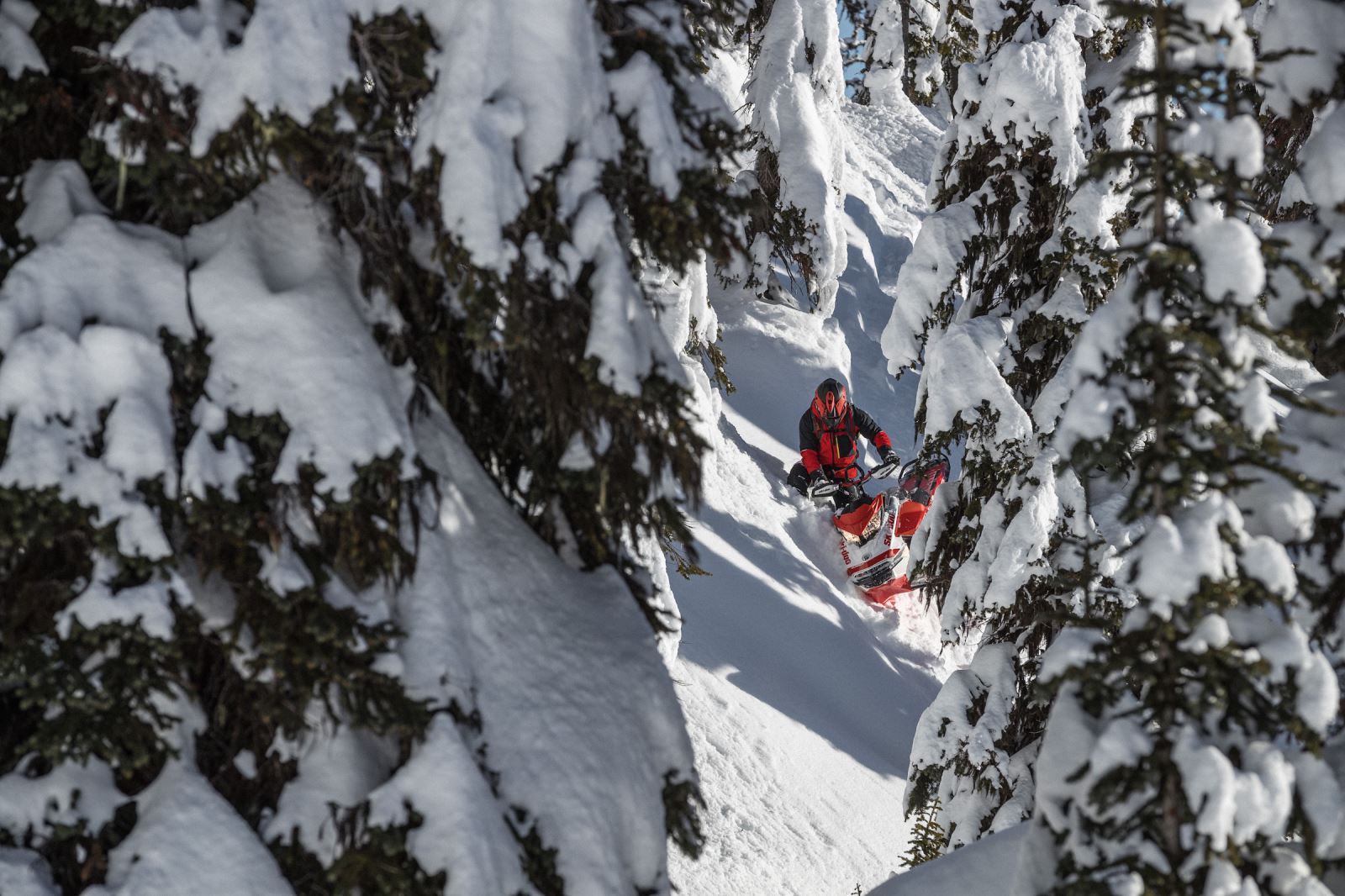Following our first ride on the 2020 Ski-Doo 850 Summit X with Expert in January, we sat down with Ski-Doo ambassadors Carl Kuster and Tony Jenkins to ask the questions that were burning on our minds:

SnoWest: What advantages does the shorter tunnel give me as a casual mountain rider?
Tony Jenkins: First off, it’s lighter weight. Second, there’s an advantage in how it pivots. When you’re riding the Expert on a sidehill line, it’s more agile. It has the ability to turn on a dime because you have less drag in the snow holding you back. The longer tunnel and full snow flap is like a rudder in some cases.
SW: Explain what you mean by that.
Jenkins: You have more material that’s being dragged through the snow with the longer tunnel. The Expert frees up that drag.
Carl Kuster: What happens is when you have the snow flap and the longer tunnel––even if you take the snow flap off––when the sled is climbing, the longer tunnel and snow flap makes the snow ball up immediately after the end of the track, at the rear idler wheels. So if we take away that material that causes the scoop effect, then that snow exits the scene rather than getting balled up. Like Tony says, the Expert is a more agile and lively ride as a result. Compared to a Summit or Freeride, you can stand the Expert up and turn it around on its tail like a pirouette and go out on the exact same track you came in on.
SW: So can I get the same effect by just taking my snow flap off on my 2019 Summit?
Kuster: That makes a difference for sure, but not the same overall result. Once the sled is on an angle, going up say a 45-degree slope, you still have the rear bumper effectively behind the rear track idler wheels. Now move that rear bumper forward four inches closer to the seat and it gives you quite a bit of room to get rid of that extra snow that the track is spitting out. When you shorten that tunnel and move it way forward, there is quite a bit less snow building up back there that holds the sled down.
Jenkins: It’s kind of a wheelie bar effect. The track can only dig down so far before the end of the tunnel acts like a wheelie bar.
SW: We noticed while riding the Expert that the snow the track eats gets completely ejected out of the way, rather than re-circulated through the tunnel. When you are clawing through stuff very slowly, that re-circulated snow gets pack densely and dumps out right in the path of where you’re trying to drive. So it seems like there’s side-effect to the Expert design in that regard.
Jenkins: If you have a 40-mile-per-hour track speed, with a tunnel and a snow flap, the snow from the track is constantly being thrown into the tunnel, compressed and re-worked. It condenses down into this hard icy material that dumps out right in front of your track. So if you’re trying to pin and wiggle out of a hole, you’re fighting that ice wall that you’re building every second the track is spinning. I find with the Expert that you don’t have that ice wall, so the track is only digging through fresh snow. It gets better traction and always seems to climb out and keep moving.
SW: Why do people who’ve ridden the Expert keep saying that it goes through deep snow so much better?
Kuster: I would say the snow evacuation we’ve been talking about has the biggest impact on why the Expert handles differently. There’s changes in weight––the Summit X with Expert is 5 pounds lighter––which makes a difference for sure. But the snow evacuation creates a propulsion. There’s so much less snow cycling through the tunnel that your track speed goes way up because there’s less resistance. You’re not dragging an anchor, so to speak. It’s more like a jet, where you get on the gas and the snow stacks up behind you and you just accelerate. The snowmobile climbs on top of the snow quite a bit faster.